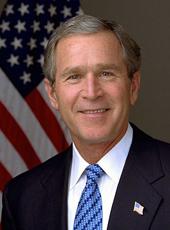The Beginning: The APEC forum was established in 1989 to promote economic cooperation and integration in the Pacific region. The United States was a driving force in APEC's creation, as a means of anchoring the United States more firmly in the region in the post-Cold War era. APEC has grown to 21 members, including four other economies in the western hemisphere (Canada, Chile, Mexico and Peru). The first APEC Leaders' Meeting occurred in 1993 when the United States invited member economies' leaders to Blake Island, Washington. In 1995, APEC established a business advisory body, called the APEC Business Advisory Council (ABAC), which consists of three business executives from each member economy.
The Bogor Goals: At Blake Island, Leaders called for continued reduction of trade and investment barriers, envisioning an "Asia-Pacific community" that promotes prosperity through cooperation. In 1994, Leaders at Bogor, Indonesia, set the goals of reaching free trade and investment by 2010 for developed economies, and 2020 for developing economies.
Strengthening Multilateral and Regional Trade: APEC's early successes included helping to build consensus for conclusion of the Uruguay Round in 1994 and its role in pioneering the 1996 Information Technology Agreement. In Shanghai (2001), APEC's strong push for a new trade Round and support for a robust program of trade capacity-building assistance was critical to the successful launch of the Doha Development Agenda a few weeks later.
APEC has taken a number of steps to liberalize regional trade. For example, in 1999 it launched the APEC Open Skies Agreement, the first multilateral air services liberalization agreement in the world. In 2001, Leaders endorsed the U.S.-proposed 'Shanghai Accord' which emphasizes implementation of APEC's commitments to open markets, structural reform, and capacity building. As part of the Accord, Leaders committed to develop and implement APEC transparency standards, reduce trade transaction costs in the Asia-Pacific region by 5 percent over 5 years, and pursue trade liberalization policies relating to information technology goods and services.
Counterterrorism: Following the September 11, 2001, terrorist attacks, Leaders in Shanghai pledged counterterrorism cooperation. In Los Cabos this year, Leaders will build on the Shanghai Statement through commitments designed to protect key Pacific Rim infrastructure -- trade, finance and information systems -- from terrorist exploitation and attack.
George W. Bush, Fact Sheet: Asia Pacific Economic Cooperation (APEC) Overview and Background Online by Gerhard Peters and John T. Woolley, The American Presidency Project https://www.presidency.ucsb.edu/node/280477

